- Home
- Muriel Spark
The Golden Fleece Page 8
The Golden Fleece Read online
Page 8
There is a poem by Emily Brontë, as perfect a lyric as the nineteenth century produced, which seems strangely to have been ignored by anthologists. ‘There let thy bleeding branch atone’ has received little attention apart from being wrongly ascribed to Anne Brontë by an editor who later amended his sad fault. The import of this poem is not immediately recognisable since it belongs to the Gondal cycle whose framework can only be guessed. Nevertheless its atmospheric immediacy is undeniable; the diction is felicitous and pure; and its poetic idea – the association of a limb torn from a tree with the rough severance of an image from the memory – conveys the unusual degree of passion, embodied in traditional lyric formality, which makes this poem an outstanding one. The reason why such an important poem should have attracted scant notice is not, possibly, a matter of taste or opinion, but of the way in which Emily Brontë’s critics have come to regard her; it is a question of what we are looking for, one that dictates what we shall find, and that affects the appreciation of all her work.
For in general, she is looked upon as a meteoric phenomenon, as a great romantic hermit, or as a profoundly individual heretic. Indeed, she was all these things. But for our own time, Emily Brontë is perhaps best seen as a part of the tradition of English poetry; and we shall not derive great advantage and pleasure from her work unless we notice and appreciate its traditional aspects.
Like Burns or Clare, Emily Brontë was an example of genius flourishing in isolation. It was this very physical and spiritual isolation that had a salutary effect on her writings: it was an isolation from the influences of contemporaneous social modes and from literary circles. But she was not isolated from literature; her solitary leisure was not spent entirely in day-dreaming and the composing of high fantasy, for Emily Brontë was a reader. While engaged in baking, we are told, she would have a book propped before her; she would enter a room full of people to snatch a book and retreat. The predominant characteristics of her poetry show how well she had assimilated her reading, and because the influence of Victorian literary criticism was never superimposed upon her, because her literary education was not drawn from current fashions, her assimilation of literature was instinctive, her natural discrimination and taste unadulterated. Like Burns or Clare, she is a poet in whom the tradition is manifest in an inevitable, because in so effortless, a way.
Now of Wuthering Heights, Lord David Cecil has justly written:
So far from being the incoherent outpourings of an undisciplined imagination, it is the one perfect work of art amid all the vast and varied canvases of Victorian fiction.
It seems odd that it should be so, considering the circumstances of its creation, considering that Emily Brontë’s craftsmanship was self-taught, and that she evolved its principles unassisted by any common tradition.
There is no common tradition in which Wuthering Heights can be fixed, so far as the English novel is concerned. But does not the unique situation occur, in that Emily Brontë’s novel is fed from traditional sources through the channels of her poetry? For, as many critics have observed, it is towards Wuthering Heights that her poems converge; they achieve fruition in that most poetic of structures.
It would be difficult to believe that the author of the lines
Is he upon some distant shore
Or is he on the sea
Or is the heart thou dost adore
A faithless heart to thee?
or of ‘Douglas’s Ride’, was not acquainted with the border ballads. Scott, whom we know to have been a favourite source of reading in the Brontë household, had done much, with his Minstrelsy of the Scottish Border, to revive during the first part of the nineteenth century the interest aroused earlier by Percy’s Reliques.
Not only do Emily Brontë’s prototypal warriors and defiant female figures comply with the ballad tradition, but her tempo and metres, her phraseology, her occasional brutal irony, testify to her knowledge of ballad formulae. ‘Douglas’s Ride’, for all it owes to ‘John Gilpin’ and possibly ‘Tam O’Shanter’, is so technically and suggestively indebted to the earlier forms, even in its conventional fireside opening, that it is, in fact, an excellent piece of ballad pastiche. Many of her Gondal pieces acquire their ballad flavour less directly. ‘And now the house-dog stretched once more’ has something of Cowper’s handling of the classical couplet, eminently suited to the narrative; while the Marmionesque sense of chivalry, the recognition of family loyalties which take precedence over private friendships in ‘Come, the wind may never again’, is reminiscent of Scott’s tenor of thought.
But Emily Brontë’s poems are not entirely of the bardic type. In sentiment, in form and in diction, they more often resemble Elizabethan and Jacobean lyrics:
Fall, leaves, fall; die, flowers, away
lengthen night and shorten day.
The cadence echoes the seventeenth century, and only her acute auditory sensibility could have captured it. No later poet but Tennyson might have been capable of this lyric, though not of its final paradox, a fusion of the ballad influence and the lyric convention, and a strong metaphysical content:
I shall smile when wreaths of snow
Blossom where the rose should grow.
The metaphysical lyric, in fact, achieved by Emily Brontë its most important development since Shelley.
There is also evidence in Emily Brontë’s verse of the romantic naturalism of her own time:
The violet’s eye might shyly flash
suggests the precision of Wordsworth. And though there is scarcely a poem by her that does not bear an implicit tribute to other poets, these various influences are not transparent. They are blended with instinctive craftsmanship, within the structure of her individual style; for Emily Brontë’s own nobility of utterance, her manipulation of sounds, her percipient use of feminine endings, and her variable rhythms, direct and modulate all other elements.
It is her technical assimilation of influences that distinguishes her poetry, that endows it with the intensity, the emotional and somewhat ominous aura, which we associate with her as with no other poet:
House to which the voice of life shall never more return
Chambers roofless, desolate, where weeds and ivy grow.
Even in this earlier poem she achieved her characteristic tension with certainty and without conscious effort.
Many factors combine to condition the particular tendencies of a poet’s style. In Emily Brontë we may well find some explanation of her strange, ebb-and-flow rhythms and her solemn, attenuated lines, in her own personality. For in these her pantheism is latent: her rhythms resemble the sweeping moorland and her language resounds with the storm and cataract.
[1952]
* ‘A Note on Charlotte Brontë’ (1877).
* Essay on ‘Emily Brontë and Wuthering Heights’, in Early Victorian Novelists (1934). Though written with special reference to Wuthering Heights, this work presents an insight into Emily Brontë’s mind, invaluable to readers of her poetry.
PART II
AUTOBIOGRAPHY AND TRAVEL
I was into my fifties, and getting old. How nerve-wracking it is to be getting old, how much better to be old!
Memento Mori
I do not care to go about with nothing on my face so that everyone can see what is written on it.
Robinson
My Most Memorable New Year’s Eve
My most memorable New Year’s Eve was when I was very small. I remember my mother and father waking me up. They took me to the window to see the fireworks. Church bells were ringing. In those days in Scotland New Year’s Eve was more important than Christmas. My mother said, ‘It’s 1923!’ She had a glass of port in her hand which I willingly sipped. I always loved a party.
[1982]
When I Was Ten
I was ten in 1928. My favourite reading was the Border Ballads, which in Edinburgh are best read in the long dark winters. In my childhood all my winter reading was done by gaslight.
I subscribed to The Children’s N
ewspaper edited by Arthur Mee, famed in his time for educational publications. It was a real newspaper, packed with non-political information. Thanks to Arthur Mee, at ten I knew more about daily life in Baghdad than most British adults do to-day.*
My after-school life was divided between lending libraries and the corner of the kitchen where I curled up with my loot. When I was ten the cloth-bound Joy Street volumes (Nos. 1–14) appeared. Presented for children, the contents were an introduction to the poetry and prose of the day, featuring such modern young stars as Compton Mackenzie, Walter de la Mare, Laurence Housman, Algernon Blackwood, Edith Sitwell, A.A. Milne, G.K. Chesterton, Hilaire Belloc and a clever Katharine Tynan.†
My bookseller found me the whole Joy Street series, to refresh my memory, some years ago. As English writing they have worn quite well.
[2003]
* This was written at the outset of the disastrous war in Iraq.
† Muriel Spark asked whether she was related to Kenneth Tynan.
Pensée: Scottish Education
The Scottish education is famous for its rational and logical qualities. Logic was one of my subjects at school at a very early age. I always studied Latin and Greek. The Scots put a great moral accent on the virtue of honesty and I have always, myself, followed honesty of thought. I was impressed as a child by the Border Ballads. These are a large collection of anonymous songs and poems from ancient times, circulating by word of mouth mostly in the borderland between Scotland and England. They were collected in the nineteenth century by Sir Walter Scott. These ballads were very exciting and thrilling to me as a child. They were cruel and lyrical at the same time and I think it had a great effect on my later literary work.
I was reminded of the Border Ballads some years ago in Florence when one evening I heard about the Guerrieri, the heroic statues that had been found in the sea off Calabria. The Guerrieri were described to me as being very beautiful and terrible. I was so fascinated that my friend and I were to spend the night in Florence in order to see them the next morning in the Archaeological Museum where they were temporarily placed. I remember going along with my friend in my evening clothes to see these absolute marvels. They took my breath away and certainly do remind me of the great heroes in those old ballads, pitiless and beautiful.
[2003]
My Book of Life
When I was fifteen I was given as school prizes The Oxford Book of Ballads and Scott’s Minstrelsy of the Scottish Border. I read them many times with increasing wonder; they entered my cognition as well as my emotional system, to stay there.
The characters who peopled these ballads seemed to me, persuaded as I was by the lovely lyricism of the ballad-forms and the language, microcosmic examples of real people whom I would expect to meet later in life, and essentially, did. They were a mysterious and irrational blend of people who could and would use their power to the utmost drop of blood, and those who, out of pure nobility, would refrain from using their power at all except for good. Lyricism, savagery, love and revenge: these were the undercurrents of life as those Ballads taught me. I have learned, am still learning, much more from life, but the basics of the Ballads go through all my works and ways of apprehending.
[2001]
Note on My Story ‘The Gentile Jewesses’*
I find it impossible to separate the Jewess within myself from the Gentile, even for the sake of argument. The attempt is absurd in any case if the two strains exist uncomplainingly amongst one’s own bones. Only, I like to analyse, to distinguish and compare. Otherwise, what is the point of all my labour and reading? I like to analyse, and then, as a reward, define myself. To embark on anything, even a train of thought, without hope of a satisfactory conclusion, is not in my nature.
I do not continually think of myself as a Gentile Jewess, or of the world as a specifically Gentile-Jewish complex. But what I felt as a child I now hold as a belief: the true dimensions of our lives are greater than they appear to be. This is a philosophical statement, a concept. By temperament I am unable to hold a concept without letting my imagination play upon it. And suddenly I return to the cycle of my grandmother’s destiny, to the crossing of the Red Sea, and the history of all her activities throughout the Scriptures, Old Testament and New, from Genesis to Revelation. All the more since I discovered myself to be a Catholic animal am I a Gentile Jewess.
When it came to essential things the Jews and Jewesses of my youth considered me an alien. I was uninstructed in the Jewish religion and orthodox customs. Perhaps I was touchy. I always felt they considered me slightly unclean by my Gentile blood. I did not then realise how far Calvinism had penetrated into the Jewish life of Edinburgh and how deeply they had become involved with themselves as an Elect. It was not till later that I came across Jewesses of my grandmother’s spiritual size.
Gentiles were mostly my friends, but I was alone because they could not understand my Jewishness which was nowhere on the surface. They thought it an accident of birth. Even then I knew it was no accident, but something essential done on purpose. I knew a girl who was half Jewish. She, too, seemed lonely and set apart. We had no interest in each other. She died young.
At school, religion was taught from the Bible. Everyone read the Bible. I did so with a sense that it was specially mine. I had a strange conception of God, I thought him a charming and witty character with a ready answer, and with a lot of conflicting sides to his nature. I liked God, especially in his sophisticated moments, as when he spoke to Moses out of the burning bush, and Moses enquired his name, and God replied, ‘I am who I am.’
That was a good answer, it inspired personal awe as well as purely technical admiration.
Am I a Gentile? Am I a Jewess? Both and neither. What am I? I am what I am.
It is said in the Catholic catechism that we are made in the likeness of God chiefly in the soul. In the final definition we are unique and indestructible. Who are you? You are who you are.
Already I am slipping into the scriptural style of questions and answers. My mind is full of my grandmother’s environment stretching from her garden path in Watford to the Holy Land where my story begins.
Is it a spiritual autobiography or is it a novel? It is both and neither, the two are inseparable. I am not a literary commentator for the time being, I am a Gentile Jewess.
Is the story fact? Is it fiction? It is what it is.
[1963]
* The story ‘The Gentile Jewesses’ is published in All the Stories of Muriel Spark (New York: New Directions) and in Muriel Spark, The Complete Short Stories (Edinburgh: Canongate Books, 2001).
The Celestial Garden Party
There are some things that people should buy because they are so attractive, so irresistible in the shop; these should be bought but never worn or used.
I am a tie-watcher on the television. Especially do I watch the male announcers’ ties. Vivid statements, they should certainly be acquired to content the restless soul of the purchaser, but they should be left to hang on the tie-rack until the moment arrives for the big periodic throw-out.
My mother had an analogous mania for hats. We lived in sober Edinburgh where, in the later ’twenties which I remember well, hats were pot-shaped, muted in colour, sometimes with tiny brims venturing an occasional feather or else made of straw for the summer, or [perhaps] light panama. Women’s hats were a crown and a brim; sometimes adorned with a cotton flower or ruched with a black satin ribbon.
But my mother’s hats were quite different. It is true that with her dark colouring and good features she looked well in those large, wavy-brimmed, shady and bedecked hats. But they were utterly impractical outside of Ascot races, and possibly the summer opening of London’s Royal Academy: four hundred miles and many many more hundreds of cultural distances from our puritanical Scottish capital. But my mother could not resist them. ‘Why,’ I asked, ‘do you buy these hats?’ She could never pass a hat-shop, particularly if the milliner gave her cash-credit. I recall my mother trying on her latest acquisition, h
olding a hand-mirror in front of the dressing-table glass so that she could see all sides. ‘It would do lovely for a garden party,’ she would invariably reply.
It was always a garden party she had in mind when she acquired and tried on those hats. I never thought of her as really wanting anything else but a garden party hat, although she did, for every day, wear a sensible head-hugging cloche. The fashionable Scottish tam-o-shanters she eschewed entirely. She wore these sensible hats out of pure obligation. In the ’twenties and early ’thirties in Edinburgh, where everything was passionless and only the weather was full of consternation, nobody left home hatless. Even the poor women of the then High Street slums wore black shawls which covered their heads. I was about ten at the time of my most vivid hat memories, but a few years later, the same hats were still occupying shelves and hat-boxes in our house. (We were never asked to a garden party, that I recall.) But I was now doing classics at school and the elements of Plato’s philosophy were seeping in. I formed the opinion that my mother’s hats were designed for an ideal Garden Party which took place somewhere in the sky. I thought of my mother’s celestial garden party many years later when I explained to dear Iris Murdoch, that most professional of Platonists, how a desire to design an automobile could start, in the Platonic sense, with a little motor-car in the sky. She was very intrigued, repeating my phrase, trying it out on herself: ‘A little motor-car in the sky…’

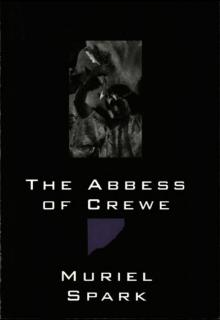 The Abbess of Crewe: A Modern Morality Tale
The Abbess of Crewe: A Modern Morality Tale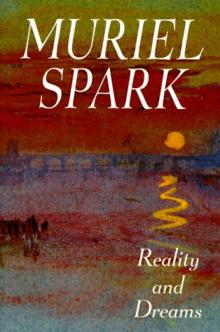 Reality and Dreams
Reality and Dreams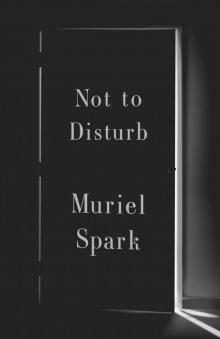 Not to Disturb
Not to Disturb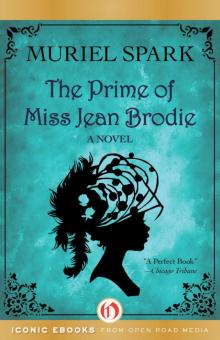 The Prime of Miss Jean Brodie
The Prime of Miss Jean Brodie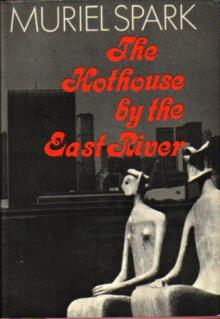 The Hothouse by the East River
The Hothouse by the East River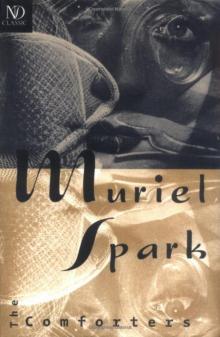 The Comforters
The Comforters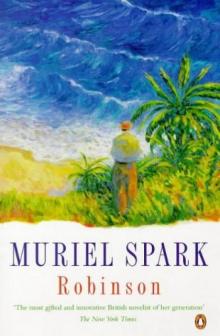 (1958) Robinson
(1958) Robinson Unknown
Unknown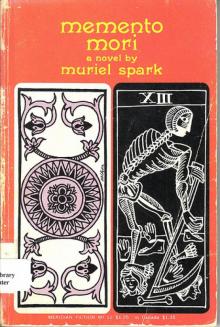 Memento Mori
Memento Mori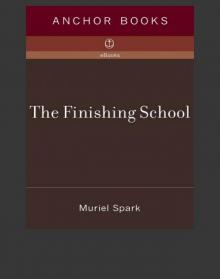 The Finishing School
The Finishing School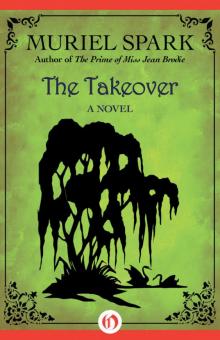 The Takeover
The Takeover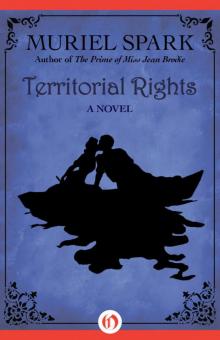 Territorial Rights
Territorial Rights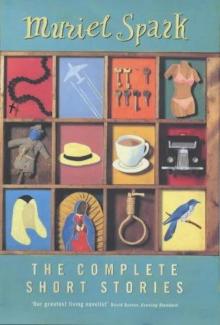 The Complete Short Stories
The Complete Short Stories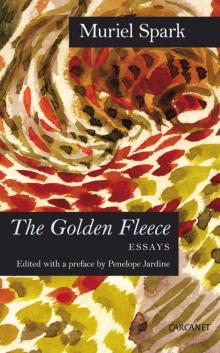 The Golden Fleece: Essays
The Golden Fleece: Essays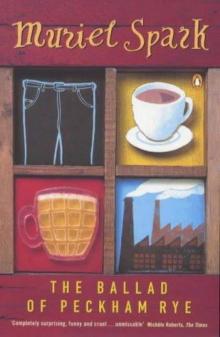 The Ballad of Peckham Rye
The Ballad of Peckham Rye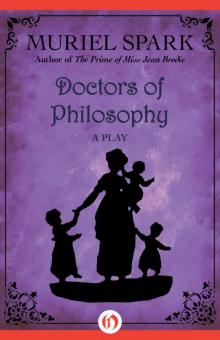 Doctors of Philosophy: A Play
Doctors of Philosophy: A Play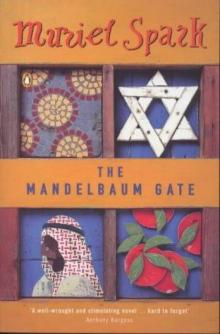 The Mandelbaum Gate
The Mandelbaum Gate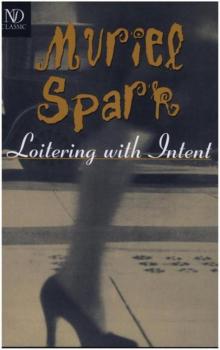 Loitering With Intent
Loitering With Intent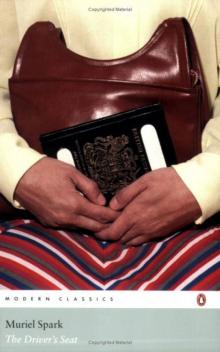 The Driver's Seat
The Driver's Seat Complete Poems: Muriel Spark
Complete Poems: Muriel Spark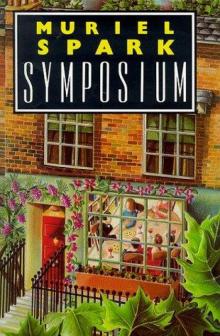 Symposium
Symposium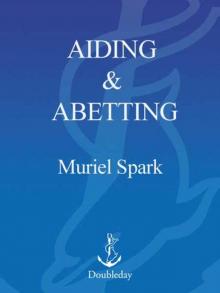 Aiding and Abetting
Aiding and Abetting The Golden Fleece
The Golden Fleece The Girls of Slender Means
The Girls of Slender Means Alice Long’s Dachshunds
Alice Long’s Dachshunds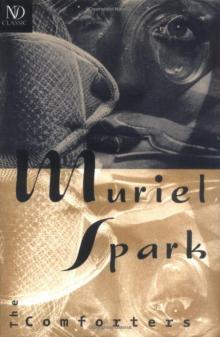 (1954) The Comforters
(1954) The Comforters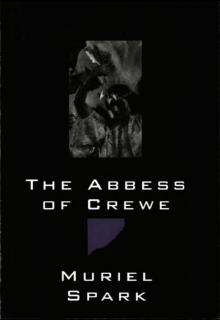 The Abbess of Crewe
The Abbess of Crewe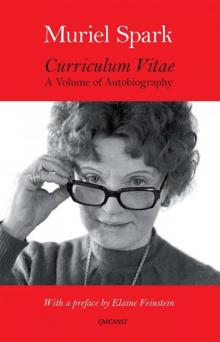 Curriculum Vitae
Curriculum Vitae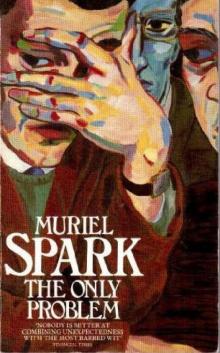 The Only Problem
The Only Problem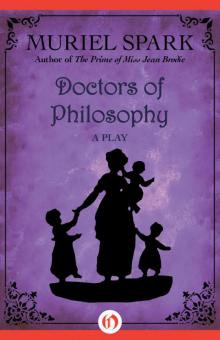 Doctors of Philosophy
Doctors of Philosophy